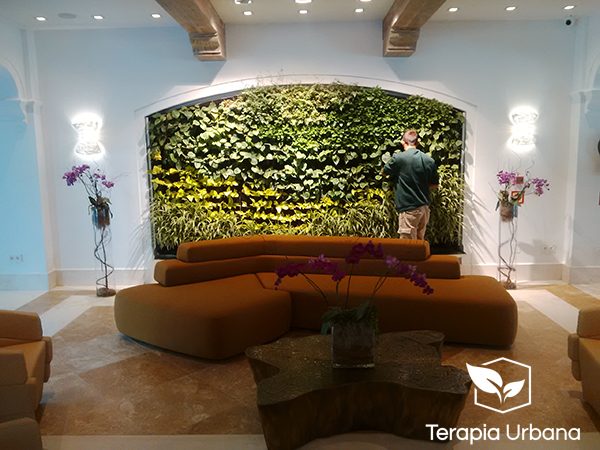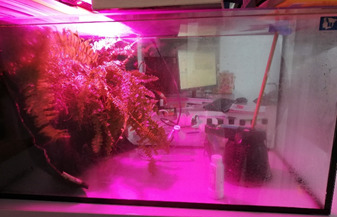The importance of living walls to improve air quality in indoor spaces is a fact that has been of great concern.
No one doubts the benefits of indoor plants anymore, but we still need more and better scientific data to justify this powerful ability in a more objective way.
Nowadays we want to share a scientific article, recently published, which provides concrete data on the contribution of vertical gardens in improving air quality in indoor spaces by eliminating VOCs.
The study has been carried out by the AGR-268 Research Group Urban Greening and Biosystems Engineering (Naturib) of the University of Seville, with which we actively collaborate at Terapia Urbana.
The article is aimed at measuring the effectiveness of vertical gardens in improving indoor air quality thanks to the elimination of total volatile organic components or VOCs.
The importance of living walls to improve air quality
As you already know, the sick building syndrome encompasses a set of health and comfort problems suffered by the occupants of a building, caused by the poor quality of the air in its interior, and an inaccurate ergonomic design.
One of the main factors that influence these problems is the high levels of chemical contaminants present in the interior spaces, such as volatile organic compounds, or VOCs, the acronym in English.
VOCs are emitted from paints, building materials, cleaning products, or may even come from the external environment.
Due to the importance of guaranteeing air quality in indoor spaces, where currently the population spends most of the time, due to its direct relationship with health and comfort, this study analyzes the improvements in air quality obtained in spaces indoors, when a living wall is included.
The living wall research on improving air quality
The experiment was carried out using a hermetic glass chamber, inside which contaminants were released in a controlled manner.
Measurements were made with the empty chamber and later placing a small vertical garden, installed with the Fytotextile® system, and planted with Nephrolepis exaltata.
The results allowed us to verify the important fixation of VOCs achieved by including the living wall module inside the chamber.
A scientific article on living walls and improving air quality

Researchers Gina Patricia Suárez-Cáceres, Rafael Fernández-Cañero, Antonio José Fernández-Espinosa, Sabina Rossini-Oliva, Antonio Franco-Salas and Luis Pérez-Urrestarazu participated in the study.
The aim of the study is to evaluate the effectiveness of a living wall module in removing volatile organic compounds and to evaluate its effectiveness in improving indoor air quality.
The results are very promising, and we summarize the main conclusions extracted from the article:
- A small living wall module improved air quality by reducing VOCs levels.
- TVOCs reduction efficacies between 12.8 and 93.4% were measured.
- The reductions depended on the initial concentrations of pollutants and time of exposure.
- In a few hours, TVOCs levels were reduced below the recommended limits.
Terapia Urbana is committed to innovation in the development of living wall construction systems, and from our origins we collaborate with the research carried out by the University of Seville in the field of urban greening.
Stay connected to stay up-to-date on new advances in research into the real and objective benefits of living walls.


